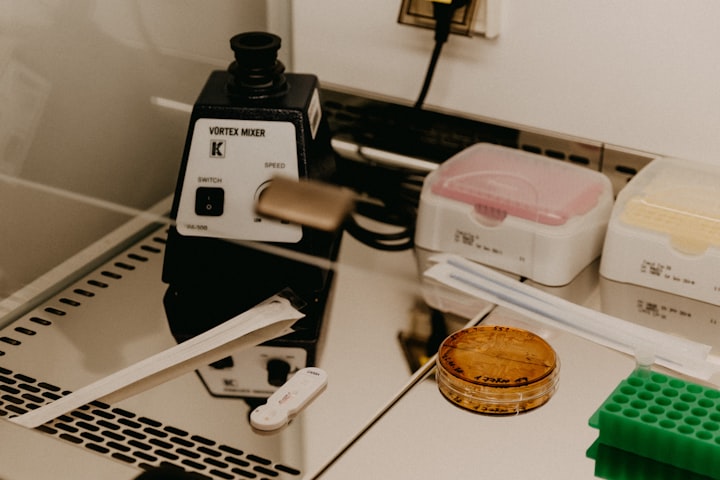Automated chemistry: The machines that can discover new drugs
Automated chemistry: The machines that can discover new drugs

Lee Cronin of the University of Glasgow in the UK has a very ambitious plan to use chemistry in a way that anyone can do chemistry. Lee Cronin and his colleagues described their mechanical ability to produce more molecules last year and have now taken the second major step in making digital chemistry an affordable way to design a machine. Alessandra Toniato of IBM's international technology center in Zurich, Switzerland, says her RoboRXN equipment can be useful for people who want to build new molecules but do not have the tools. The IBM RoboRXN international technology kit uses a machine-learning algorithm to help improve the integration of 3 million cells that work against a chemical reaction training site.
The AI RoboRXN cloud model is designed to operate automatically like a robot that uses machine learning technology to produce chemical and drug laboratory labs with little or no human intervention. It incorporates artificial intelligence models, cloud computing, and robots to help scientists design and assemble new molecules while working from home. Recently, machine learning models have been developed to facilitate automated, integrated, and possible integration with a large monitoring site. These and related methods of machine learning based on ever-growing accurate data and placement of chemical reactions are no longer science fiction and will allow for the creation of fully integrated drug discovery platforms.
Sharing data and open source software between research institutes will also speed up the effective modeling of automatic drug discovery217. The use of new substances, especially changing ones, is important in reducing the difficulties associated with drug availability and avoiding the high costs and time required to bring drugs to market. Such advances have not only simplified the drug discovery process by reducing production time, but also by reducing costs by allowing scientists to develop new drugs for the health problem while maintaining social class distinctions. In the future, drug companies could use robotic scientists like Eve to simplify the drug development process or explore new potential drug use, King said.
Many drug development efforts, such as testing a high-quality library, are already highly automated, and Eva is equipped with all the necessary tools to test tens of thousands of combinations per day and identify potential clients. Once the lead molecule has been discovered, Eva can produce the type of yeast needed to test its effectiveness against a particular disease.
The test results form the basis of a lead-based chemical development program to improve the efficiency of a series of chemical compounds in the main drug protein. An important system approach during the lead discovery phase consists of a series of functions and begins with the development of biological tests that will be used to identify active molecules in a particular object. This review will review the key steps of the drug discovery process, from targeted diagnostics and initial confirmation, to developmental tests, advanced testing, results in detection, lead development, and finally clinical choice of a clinical candidate molecule.
The traditional formulation of drugs is long, expensive, and fraught with many failures: scientists are examining millions of molecules, yet few have progressed to pre-clinical or clinical trials. Summary Building a new tree from the first concept to the finished product is a complex process that can take 12-15 years and cost more than $ 1 billion. It takes ten years and ten million dollars to find a new drug, test it, and bring it to market.
Seeking success in industrial change, with its powerful effects, can go a long way in improving drug development during the COVID violence. To address this major obstacle to drug development, IBM has introduced an independent chemical laboratory that combines artificial intelligence, robots, and the cloud: RoboRXN. The team represents one of the many groups in education and industry, all striving to bring chemistry into the digital age, which could lead to safer medicine, more efficient solar cells, and a newly evolving industry.
The concept of automated drug development is not new, but the complete automation of the DMTA cycle has not yet been achieved, and this is the goal of the AstraZeneca Lab. Nowadays, however, chemists are beginning to think that running can be done automatically, allowing us to build larger libraries of new molecules and explore their properties.
Currently, we can test perhaps a few million laboratory molecules on a large scale, compared to the predictions of billions of compounds. ''.ML methods can be used at all stages of drug growth. Accurate modeling of dynamic interactions even between potential drug molecules and targeted proteins in the biological environment already requires a lot of processing power.
When trained in network activity data, all network activity is converted into basic network activity and, after successful training, can be used for automated network configuration. After the machine learning model has been updated with the newly obtained test loop (feedback loop), a new design hypothesis is developed and rapid connection development is possible. Once trained, the model or machine can begin to speculate and make decisions as new data becomes available.
These image profiles can be extracted to determine appropriate patterns and reveal unexpected biological functions, such as pathology for the untested disease: this important information can be used in the drug development process. In this context, various concepts of in-depth learning are currently being considered as an effective alternative to drug discovery and exchange, as these programs aim to mimic the process of identifying a pharmacist's pattern and taking it to another level.





Comments
There are no comments for this story
Be the first to respond and start the conversation.